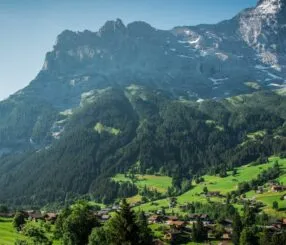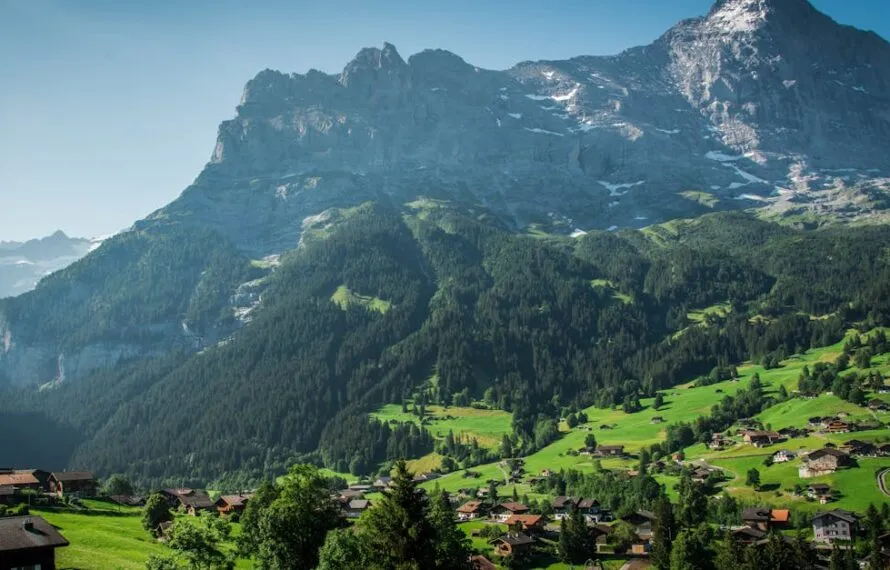The Swiss Alps, with their majestic peaks and breathtaking vistas, offer an unparalleled hiking experience.
However, choosing the right time to explore these mountains can make all the difference.
Understanding the climate and seasonal variations is key to planning your adventure.
O que este artigo aborda:
- Understanding the Swiss Alps climate
- Seasonal weather patterns
- Altitude impact on weather
- Best months for hiking in the Swiss Alps
- Spring hiking conditions
- Summer hiking conditions
- Fall hiking conditions
- Popular hiking trails by season
- Spring trail recommendations
- Summer trail recommendations
- Fall trail recommendations
- Essential gear for hiking in different seasons
- Spring gear essentials
- Summer gear essentials
- Fall gear essentials
- Safety tips for hiking in the Swiss Alps
- Weather-related safety tips
- Wildlife and environmental considerations
- Additional activities to enjoy in the Swiss Alps
- Cultural experiences
- Adventure sports
Understanding the Swiss Alps climate
The Swiss Alps boast a diverse climate, heavily influenced by altitude and geographical location.
The weather can be unpredictable, but certain patterns help guide when to visit.
Seasonal weather patterns
In the Swiss Alps, seasons bring distinct weather changes.
Winter blankets the mountains in snow, making them a haven for skiers.
Spring sees the thawing of snow, with flowers beginning to bloom.
Summer offers warm temperatures and clear skies, ideal for hiking.
Fall brings cooler temperatures and a stunning display of autumn colors.
Altitude impact on weather
Altitude plays a significant role in the Swiss Alps’ climate.
Higher altitudes experience cooler temperatures and more precipitation.
As you ascend, weather conditions can change rapidly.
Always be prepared for sudden shifts, especially when hiking at higher elevations.
Best months for hiking in the Swiss Alps
When considering what are the best months to visit the Swiss Alps for hiking, it’s essential to weigh the pros and cons of each season.
Spring hiking conditions
Spring, from April to June, offers a unique charm.
The lower trails become accessible as snow melts, revealing lush greenery and blooming wildflowers.
However, higher trails might still be snow-covered, requiring caution and proper gear.
Summer hiking conditions
Summer, from July to September, is the peak hiking season.
The weather is warm, and most trails are open.
This is the best time for high-altitude hikes, with clear skies providing stunning views.
However, popular trails can be crowded.
Fall hiking conditions
Fall, from October to November, is a quieter time to hike.
The weather cools, and the landscape transforms into a tapestry of autumn hues.
Trails are less crowded, offering a peaceful experience.
However, weather can be unpredictable, with early snowfalls possible.
Popular hiking trails by season
Each season offers unique trails that cater to different preferences and skill levels.
Spring trail recommendations
In spring, explore the lower-altitude trails like the Lauterbrunnen Valley.
This area is known for its waterfalls and vibrant greenery.
The Aletsch Glacier trail is another excellent choice, offering breathtaking views of the largest glacier in the Alps.
Summer trail recommendations
During summer, tackle the iconic Eiger Trail.
This challenging hike offers close-up views of the Eiger North Face.
The Haute Route, stretching from Chamonix to Zermatt, is a multi-day trek for seasoned hikers, showcasing the best of the Alps.
Fall trail recommendations
In fall, the Engadine Valley offers stunning autumn landscapes.
The Via Engiadina trail provides a mix of cultural experiences and natural beauty.
The Zermatt to Täsch hike is another great option, with fewer crowds and picturesque views.
Essential gear for hiking in different seasons
Proper gear is crucial for a safe and enjoyable hiking experience in the Swiss Alps.
Spring gear essentials
In spring, pack layers to adapt to changing temperatures.
Waterproof boots are essential for muddy trails.
Carry trekking poles for stability on uneven terrain.
Summer gear essentials
For summer hikes, lightweight clothing and sturdy hiking boots are key.
Sunscreen and sunglasses protect against strong UV rays.
A hat and plenty of water are also important.
Fall gear essentials
In fall, pack warm layers and a waterproof jacket.
Trails can be slippery, so wear boots with good grip.
A thermal flask for hot drinks is a welcome addition.
Safety tips for hiking in the Swiss Alps
Safety should always be a priority when hiking in the Swiss Alps.
Weather-related safety tips
Check the weather forecast before heading out.
Be prepared for sudden changes, especially at higher altitudes.
Always carry a map and compass, as GPS signals can be unreliable.
Wildlife and environmental considerations
Respect local wildlife by keeping a safe distance.
Stick to marked trails to minimize environmental impact.
Carry out all trash and leave no trace.
Additional activities to enjoy in the Swiss Alps
Beyond hiking, the Swiss Alps offer a wealth of activities.
Cultural experiences
Immerse yourself in Swiss culture by visiting charming alpine villages.
Experience local traditions and cuisine, such as cheese fondue and raclette.
Adventure sports
For thrill-seekers, the Swiss Alps offer paragliding, rock climbing, and mountain biking.
These activities provide a different perspective of the stunning landscape.
In conclusion, the best months to visit the Swiss Alps for hiking depend on your preferences and desired experience.
Whether you choose the vibrant blooms of spring, the sunny days of summer, or the tranquil beauty of fall, the Swiss Alps promise an unforgettable adventure.
Always prioritize safety and respect the natural environment to ensure a memorable journey.





Sem comentários